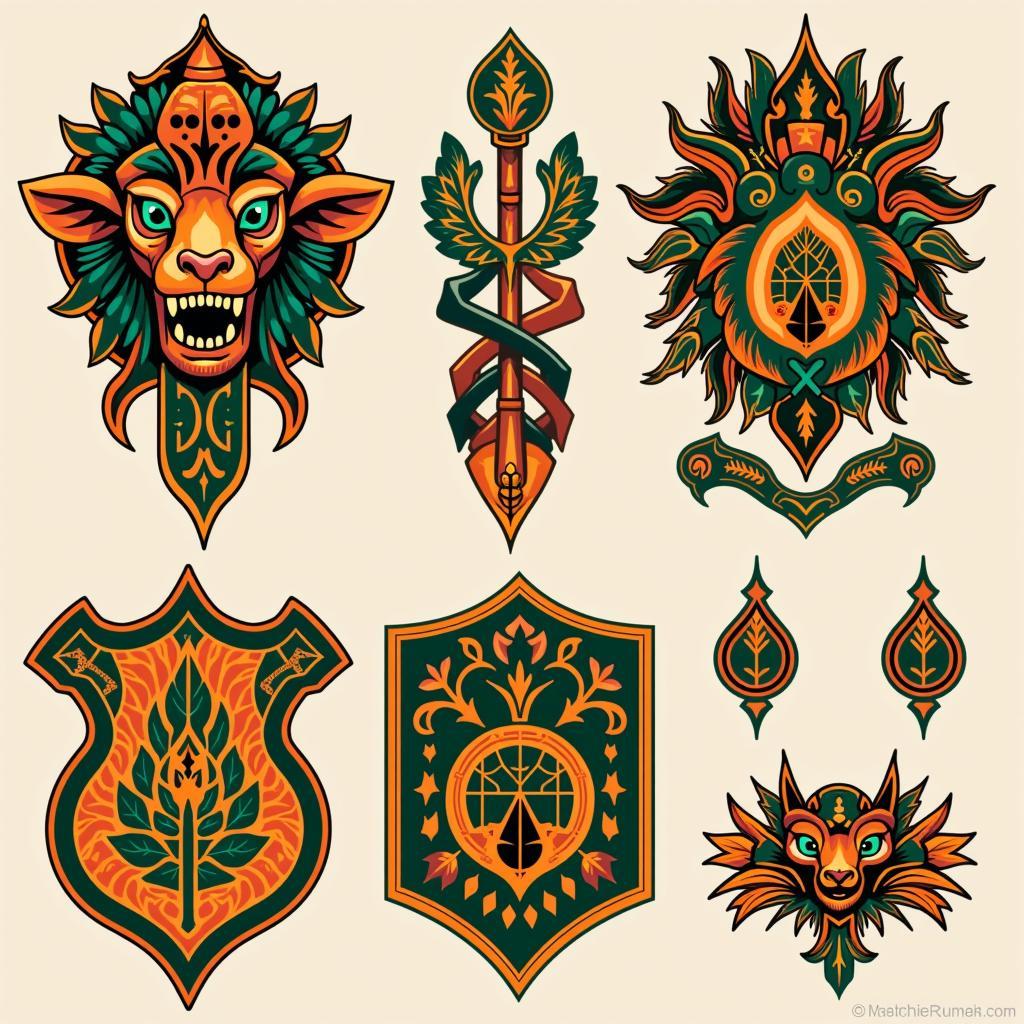Exploring the Vibrant World of African Folk Dance
African Folk Dance is more than just movement; it’s a vibrant tapestry woven with the threads of history, culture, and tradition. From the rhythmic stomping of the Zulu Indlamu to the graceful swaying of the Gumboot dance, each movement tells a story, expressing emotions, celebrating life, and connecting communities across the vast and diverse continent of Africa. african folk dance video
The Significance of African Folk Dance in Cultural Expression
African folk dances are deeply intertwined with the social fabric of the continent. They are often performed during ceremonies, rituals, and celebrations, marking important milestones in life like births, marriages, and harvests. These dances are not merely entertainment; they are a powerful medium for storytelling, preserving history, and transmitting cultural values from one generation to the next. The dances often incorporate symbolic gestures and movements, representing aspects of daily life, spiritual beliefs, and historical events.
For instance, the Kpanlogo dance of the Ga people in Ghana, originally a war dance, evolved into a social dance performed during festivals. This evolution showcases how folk dances adapt and reflect the changing times while retaining their cultural significance.
Rhythms and Movements that Speak Volumes: Understanding the Diversity of African Folk Dance
The diversity of African folk dance is as vast as the continent itself. Each region, tribe, and ethnic group boasts unique dance styles, characterized by distinct rhythms, movements, and costumes. From the energetic and acrobatic dances of East Africa to the more grounded and circular movements of West Africa, every dance offers a glimpse into the specific cultural nuances of its origin. The accompanying music, often played on traditional instruments like drums, rattles, and flutes, adds another layer of richness and complexity to these performances. african folk dance for children's choirs
What are the common characteristics of African folk dances? Many incorporate polyrhythms, complex rhythmic patterns played simultaneously, creating a dynamic and layered soundscape. Movements often emphasize the torso and hips, reflecting the close connection to the earth and the natural world. The use of costumes, masks, and body paint further enhances the visual spectacle and adds symbolic meaning to the performance.
How is African Folk Dance Preserved and Passed Down Through Generations?
The preservation of African folk dance relies heavily on oral tradition and community involvement. Elders play a crucial role in teaching younger generations the intricate steps, rhythms, and cultural significance of each dance. Community gatherings, festivals, and ceremonies provide platforms for these dances to be performed and witnessed, ensuring their continuity. african folk dnce
“Preserving our dance traditions is not just about remembering the steps,” says Adebayo Adegbola, a renowned Nigerian choreographer. “It’s about keeping our history, our stories, and our identity alive.” Increasingly, efforts are being made to document and archive these dances through video recordings, workshops, and educational programs, ensuring that they reach a wider audience and are not lost to time.
African Folk Dance in the Modern World: Evolution and Influence
While rooted in tradition, African folk dance is not static. It continues to evolve, adapting to modern influences and finding new expressions in contemporary dance forms. African rhythms and movements have inspired countless choreographers and dancers worldwide, influencing everything from ballet to hip-hop. This cross-cultural exchange has enriched the global dance landscape and brought greater recognition to the beauty and power of African folk dance. african christmas theme
Kenyan dancer and choreographer, Wanjiru Kamuyu, observes, “African folk dance is not just a part of our past, it’s a vibrant part of our present and future, constantly evolving and inspiring new forms of artistic expression.” This dynamism ensures that African folk dance will continue to captivate audiences and inspire creativity for generations to come.
In conclusion, African folk dance is a vital expression of culture, history, and tradition, encompassing a rich tapestry of diverse styles and meanings. From ceremonial rituals to contemporary performances, these dances continue to connect communities, preserve heritage, and inspire artistic innovation across the globe. African folk dance is a testament to the enduring power of human expression and the vibrant spirit of Africa.
FAQ
- What is the significance of drums in African folk dance?
- Are there specific costumes associated with different African folk dances?
- How can I learn more about African folk dance?
- What are some of the most famous African folk dances?
- How does African folk dance differ between regions?
- What is the role of storytelling in African folk dance?
- Are there any resources available for learning African folk dance online?
Need further assistance? Contact us at +255768904061, email [email protected] or visit us in Mbarali DC Mawindi, Kangaga, Tanzania. Our customer service team is available 24/7.





